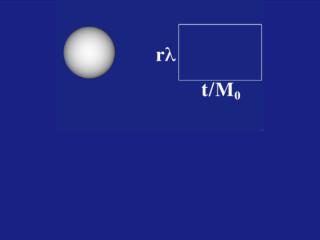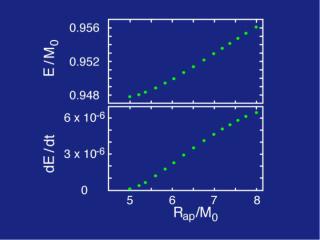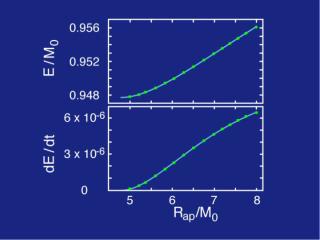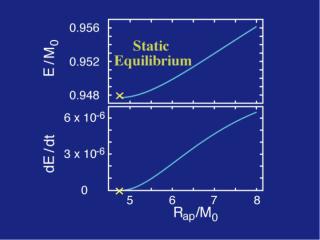The fundamental assumption of the quasi-equilibrium (QE) approximation is that the pulsation timescale of the sphere is much shorter than the gravitational radiation reaction (damping) timescale. The sequence of pulsations then proceeds along a sequence of QE oscillation configurations with each particle nearly returning to the same apocenter radius. In a QE dynamical simulation, each QE shell configuration provides a periodically oscillating matter source for the non-linear field equation of scalar gravity. The dynamical field equation is integrated in time using this source to determine the outgoing gravitational wave emission at each apocenter radius of the particles.
We now calculate the QE gravitational wavetrain for the R=8M0 case. Here we show the gravitational wavetrain from the QE configuration which oscillates at at the initial apocenter radius of the particles in the shell.

From this information, we can plot both the energy at this configuration and the energy emission rate. A discrete number of quasi-equilibrium configurations with different values of apocenter radius Rap but the same particle angular momentum are numerically evolved. For each configuration, we find the energy and the gravitational wave luminosity, as shown below.

From these 15 cases, we fit a smooth curve connecting the data points.


We mark the final static equilibrium configuration on the smooth curve with the yellow x.